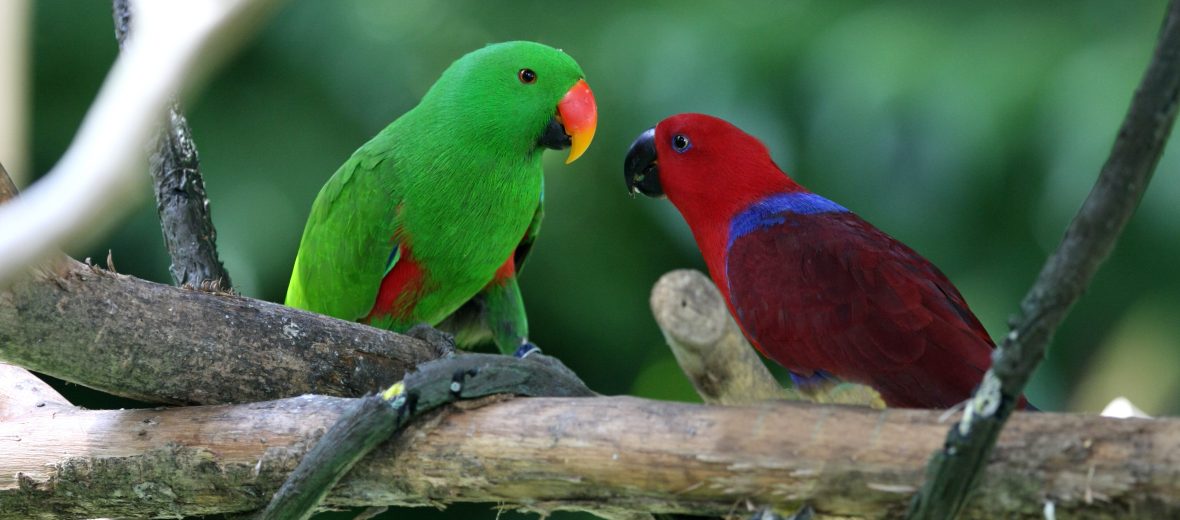
The moluccan eclectus parrot hails from the Maluku Islands. They prefer the canopy level of the rainforests. However, they’re restricted to rainforest patches and eucalypt woodlands in their ranges. Even though they face the threats of habitat destruction at the hands of deforestation due to the timber industry; hunting; and trapping (for the exotic pet trade), these birds are still listed as Least Concern by the IUCN. Their estimated numbers are around 51,000. But those numbers are decreasing.
First the Stats…
Scientific name: Eclectus roratus
Weight: Up to 16 ounces
Length: Up to 14 inches
Wingspan: Up to 10+ inches
Lifespan: Up to 30 years
Now on to the Facts!
1.) These parrots are the most sexually dimorphic of the parrot species, in that males are bright green and females are dark red. This is called sexual dichromatism, a form of sexual dimorphism where the 2 sexes have
markedly differential coloration.
2.) The green coloration of males aids in camouflage while gathering food for the female. Whereas the deep reds of the female server as a signal to males in the area that they are present and potentially available to mate.
3.) Unfortunately for their wild numbers, these parrots do well in captivity and are very popular as exotic pet birds around the world. This causes a decline in their wild populations.
4.) There are 5 known species of eclectus parrots: moluccan eclectus, sumba eclectus, tanimbar eclectus, papuan eclectus, and oceanic eclectus (extinct).
5.) The moluccan eclectus parrot has a range of calls from a loud, high-pitched squawk to whistles, and even screeches. They also produce a chime-like call when the male returns to the nest.
But wait, there’s more on the moluccan eclectus parrot!
6.) They feed on various fruits and their pulp, seeds, blossoms, leaf buds, nectar, figs, and nuts.
7.) Their proventriculus (the glandular region between the crop and gizzard) is stretched out and very distensible. This allows it to hold nearly equal amounts of food as the crop.
Did you know…?
In some instances females have been documented fighting other females to the death over a nesting hollow.
8.) Once a nesting site is procured, the female will not leave the nest unless threatened. In fact, females will usually hold onto good nesting hollows; sometimes using the same 1 for years.
9.) These birds have been seen exhibiting both polyandrous (females mate with multiple males) and polygynandrous (males mate with multiple females and females mate with multiple males) behaviors. At times they even exhibit cooperative polyandry. This is where multiple males will breed with a single female, and all those males work together to help the female raise the chicks, as opposed to competing with each other. These are the only known parrot species to do this.
10.) Females lay up to 2 eggs, but typically only ever fledge a single chick. The young hatch in up to 30 days.
But wait, there’s still more on the moluccan eclectus parrot!
11.) The moluccan eclectus parrot is also unique in that they can also bias the gender of their offspring. This is where they can control whether their young are hatched as males or females. Males will be created in times of food and hollow abundance, whereas females are created in lean times.
12.) Peregrine falcons are their primary predator.
Now a Short Moluccan Eclectus Video!
Be sure to share & comment below! Also, check out the Critter Science YouTube channel. Videos added regularly!
Want to suggest a critter for me to write about? Let me know here.
Photo credit: Shiny Things



